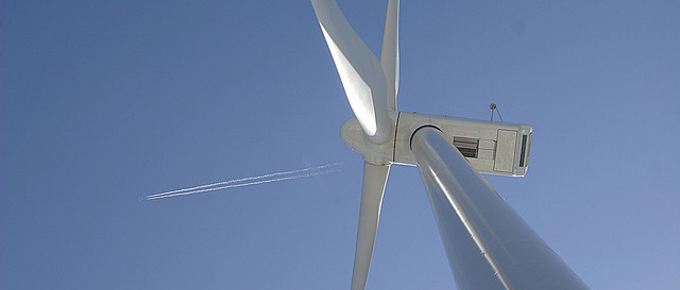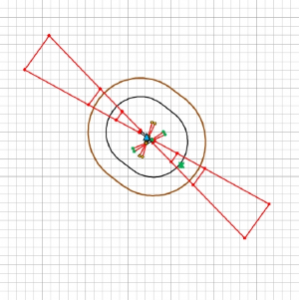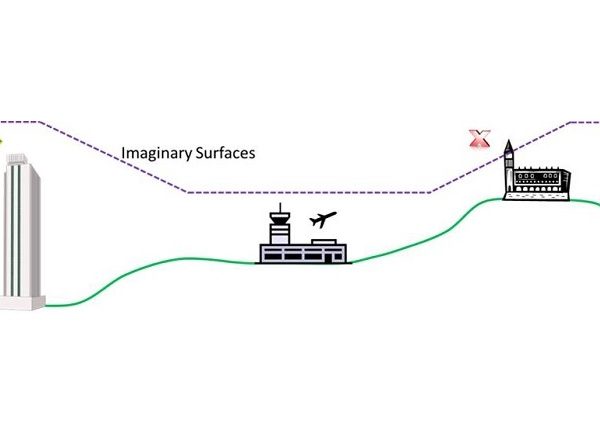I am planning to build a wind farm in the UK. I am aware that wind turbines can affect civil and military airports, radar and radio systems. How can I be sure that my wind farm will not affect military and civil airports, radar and radio systems? Are there standard rules I can follow to avoid a planning objection, and are they understandable?

In the UK over the last 10 years military and civil aviation stakeholders have produced guidelines to assist the co-existence of wind farms and aviation. However, to date there are no uniform guidelines or criteria applied across all the civil and military airports, radar and radio systems. This often results in objections, negotiations, sometimes legal proceedings and confusion when in planning.
Safeguarding guidelines provide standard criteria against which wind turbine applications can be assessed. This is beneficial both for the aviation stakeholder (airport manager, safeguarding officer, air traffic services manager, etc.) and the wind farm developer. The aviation stakeholder uses them to quickly assess the potential impacts and offer a transparent process whilst the wind farm developer can use them in the early stages to plan a project to perhaps avoid any adverse aviation impacts.
The impact of wind turbines on aviation interests can be split into three categories: physical, technical and operational. We have compared the current civil and military guidelines based on those categories of impact.
Physical Impact
Wind turbines, as all tall structures, can negatively impact flying safety when in the vicinity of an airfield. Such effects are managed by safeguarding relevant airspace using three dimensional imaginary surfaces known as Obstacle Limitation Surfaces (OLS). Both the Civil Aviation Authority (CAA) and the Military Aviation Authority (MAA) have published guidelines for producing such surfaces. These are:
- Civil Aviation: Civil Aviation Publication (CAP) 168.
- Military Aviation : Manual of Aerodrome Design & Safeguarding (MADS)
Overall, the rules in both documents are clearly defined and easily accessible. In the case of MADS the criteria are slightly more stringent. For example the Outer Horizontal Surface for a civil aviation runway with a length of 1,860m or more is 150m above ground. In the case of a similar runway used by military aircraft the height would be 145m. Hence, a wind turbine having a height of 147m would breach the military criteria but not the civil ones.
Additionally in the UK where military low flying training is undertaken objections can arise. In Tactical Training Areas aircraft can fly as low as 100ft and hence large obstacles such as wind turbines can be a safety concern and the same time prevent low flying training. The main guidelines that exist for military low flying is avoiding locating wind turbines within the 3 Tactical Training Areas (northern Scotland, the borders area of southern Scotland and northern England as well as central Wales).
Technical Impact
Military and civil radar and radio systems emit radio signals for their operation. Wind turbines are large reflecting structures and can affect the emitted radio signals. In the case of civil systems the most common radio systems affected are the:
- Primary Surveillance Radar (PSR)
- Secondary Surveillance Radar (SSR)
- Radio Navigation and Communication Aids (Distance Measuring Equipment (DME), VHF Omni-Directional Radar beacons (VOR), Ground Air Communications)
For military aviation the most common radar systems affected are the:
- Primary Surveillance Radar (PSR)
- Secondary Surveillance Radar (SSR)
- Air Defence Radar (ASACS)
- Precision Approach Radar (PAR)
- Radio Navigation and Communication Aids.
Guidelines
Both civil and military authorities have produced guidelines:
- Civil Aviation: RenewableUK Wind Energy and Aviation Interests Interim Guidelines, CAP764, CAP670, and International Civil Organisation Eur Doc 015.
- Military Aviation: RenewableUK Wind Energy and Aviation Interests Interim Guidelines provide some guidance. However, since their publication in 2002 safeguarding guidelines have significantly changed. Radar are usually safeguarded to their effective maximum range. For example Air Defence Radar are usually safeguarded to distances over 450km. Additionally, depending on the radar type specific criteria are applied which over time can be modified.
Overall, the safeguarding rules for civil radar and radio systems appear to be more clearly defined whilst rules for military radar are more stringent and sometimes due to the nature of military operations not always transparent.
Nevertheless, both military and civil SSR are safeguarded to distances up to 10km from the antenna (10km for civil SSR and 9.26km for military SSR).
Operational Impact
This is probably the greyest area for developers, since there are no specific guidelines for assessing the operational impact of wind turbines on civil and military aviation interests. The operational impact is assessed on a case by case basis and it is down to the specific air traffic controller, airport manager or the person in charge of safeguarding to decide how a physical and/or technical impact can affect the current and future aviation operations.
Conclusions
Civil and military guidelines exist to safeguard aviation interests whilst facilitate wind farm development.
Current military and civil guidelines appear to be objective and clearly defined for the physical impact of wind turbines. However, when it comes to assessing the technical impact on radar and radio navigation systems it appears that the civil guidelines are more clearly defined when compared to the military ones.
Military safeguarding rules appear to be more stringent due to the sensitive nature of their operations. Finally, despite it being highly desirable to have standard guidelines for assessing the operational impact of a wind turbine on both civil and military aviation, this would not be possible due to assessments needing to be undertaken on a case by cases basis.
Our View
Currently many of the wind turbine sites that have followed standard published safeguarding rules have been used. This means that developers are likely to start considering sites that are more likely to interfere with aviation interests. Additionally, with an increasing number of operational wind farms reaching the stage of repowering it is likely that there will be an increasing number of wind farms that will need re-assessment.
It is believed that there is a need for more clearly defined criteria for assessing the technical impact on radar and radio systems. Clear criteria means that the assessment of technical impacts on radar and radio systems can be automated and hence reduce the time spent by the aviation stakeholder for each assessment. Although desirable the operational impact will always have to be on a case by case basis.
Need Assistance?
If you would like to speak to us about a wind turbine safeguarding issue, or a related matter just get in contact with us. We’ll be happy to help. Call +44 (0) 1787 319001 or write us an email and send it to info@pagerpower.co.uk.
Image accreditation: “Big Turbine” by Martin Cathrae / CC BY / Cropped from original




